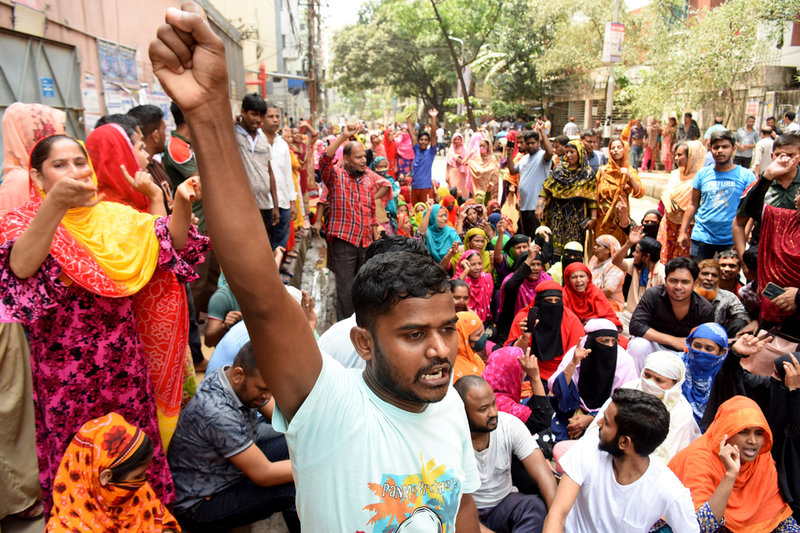IN DATA
Best and worst apparel worker wages
The Philippines and China currently have the highest apparel worker wages compared to their relative cost of living since Covid, according to an analysis of figures from 24 apparel producing nations.
Powered by

The figures highlight the parts of the world that are lagging in terms of apparel worker wages and conditions, as well as the countries that may have taken more of a hit from the Covid pandemic.
Wage estimates produced by Just Style’s parent company GlobalData were compared to modelled living wage estimates produced by the WageIndicator Foundation to identify the countries where apparel workers are paid most fairly.
The largest gap in apparel worker wages since Covid
Of the 24 countries with available data, the largest gap between the estimated take-home pay of an apparel worker and a wage that would support a family of two adults and two children was in Morocco – the equivalent of US$306 a month. That was followed by Egypt ($294 a month), Thailand ($251), and Vietnam ($233.5).
At the other end of the scale was the Philippines ($30 under the monthly living wage) and China ($40.5 under the monthly living wage).
The gap between wages and living costs was already large in most countries before the pandemic hit - but in many places it has since increased.
The disruption caused by Covid for the largest garment exporters has had knock-on effects on workforce conditions and pay within the apparel sector. On top of the risks posed by the virus itself, a report by the Clean Clothes Campaign found widespread wage cuts during the pandemic, alongside increased overtime.
A separate study by the International Labour Organization (ILO) found that in a sample of 17 countries, on average 34% of working hours and 15% of jobs in the apparel sector were lost in 2020 Q2, and 15% and 6% respectively were lost in 2020 Q3, compared with the year before. As of April 2021, the organisation estimated that 44% of all jobs in the global supply chains for apparel were experiencing an adverse impact.
A rise in forced and child labour practices
Wage cuts and longer hours aren’t the only negative that Covid has had on apparel workers worldwide. Rising poverty, the impacts of disease on families, and school closures have led to progress being reversed on child labour, with ILO models forecasting a rise in child labour of 8.9 million by the end of 2022 as a result of the pandemic.
Many countries still have issues with child and forced labour being used in garment production. In 2020, around 44% of worldwide apparel exports were from nations with poor labour practises.
According to separate figures compiled by GlobalData, most countries where this still takes place are in the Asia-Pacific region - many of which are large garment exporters. The number of countries on the list has increased in recent years, with Mexico a new addition since it was last published in 2018.
Most of these clothes will end up in wealthier nations. Looking at UN Comtrade data, the countries with the largest percentage of clothes imports from nations that have issues with forced or child labour were the US, Germany, Japan, and the UK. Although the data doesn’t reveal how many of the imported garments were the product of forced labour, it gives an idea of where these products may end up.
A bipartisan bill in the US called the ‘Slave-Free Business Certification Act’ aims to tackle this problem. It requires certain retailers and manufacturers to publicly disclose their efforts to eradicate forced labour in their supply chains. It is one small step but may help claw back some of the adverse effects apparel workers have faced as a result of the pandemic.
Main image credit: Mamunur Rashid / Shutterstock.com
BACK TO TOP